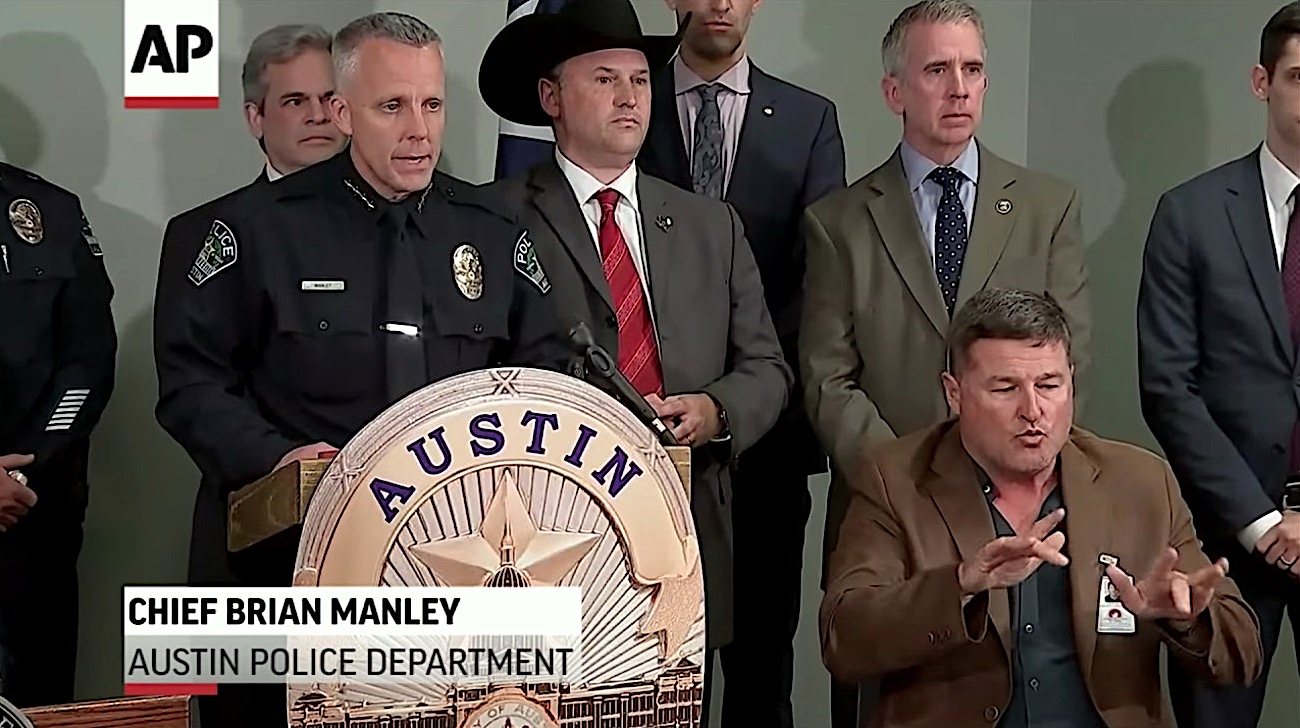Austin bombing suspect's 25-minute recorded 'confession' leaves a lot of open questions


Austin Police Chief Brian Manley said Wednesday evening that the presumptive serial bomber who died in a police standoff early Wednesday morning left a video recording on his phone, which was recovered from his car after the suspect, Mark Conditt, detonated an explosive device. "I would classify this as a confession," Manley said, and in it Conditt, 23, describes in some detail the six complete explosive devices that went off in and around Austin starting March 2 and ending with his apparent suicide blast. The six explosions killed two other people — Anthony House, 39, and Draylen Mason, 17 — and wounded at least four others.
Conditt made the recording between 9 and 11 p.m. Tuesday night, as police were closing in on him, and while he talked about what he did, Manley said, he did not provide a motive. "We are never going to be able to put a [rationale] behind these acts, but what I can tell you having listened to that recording: He does not at all mention anything about terrorism nor does he mention anything about hate, but instead, it is the outcry of a very challenged young man, talking about challenges in his personal life that led him to this point."
Police and federal law enforcement tracked Conditt down using several methods, including supply purchases at a Home Depot, but his decision to ship two explosives-laden packages from a FedEx store on Sunday gave investigators surveillance footage of him, his car, and his license plate. On Wednesday, police found unfinished homemade explosives and materials at his house in the Austin suburb of Pflugerville. You can learn more in the CNN report below. Peter Weber
The Week
Escape your echo chamber. Get the facts behind the news, plus analysis from multiple perspectives.

Sign up for The Week's Free Newsletters
From our morning news briefing to a weekly Good News Newsletter, get the best of The Week delivered directly to your inbox.
From our morning news briefing to a weekly Good News Newsletter, get the best of The Week delivered directly to your inbox.
A free daily email with the biggest news stories of the day – and the best features from TheWeek.com
Peter has worked as a news and culture writer and editor at The Week since the site's launch in 2008. He covers politics, world affairs, religion and cultural currents. His journalism career began as a copy editor at a financial newswire and has included editorial positions at The New York Times Magazine, Facts on File, and Oregon State University.
-
 7 bars with comforting cocktails and great hospitality
7 bars with comforting cocktails and great hospitalitythe week recommends Winter is a fine time for going out and drinking up
-
 7 recipes that meet you wherever you are during winter
7 recipes that meet you wherever you are during winterthe week recommends Low-key January and decadent holiday eating are all accounted for
-
 Nine best TV shows of the year
Nine best TV shows of the yearThe Week Recommends From Adolescence to Amandaland
-
 Nobody seems surprised Wagner's Prigozhin died under suspicious circumstances
Nobody seems surprised Wagner's Prigozhin died under suspicious circumstancesSpeed Read
-
 Western mountain climbers allegedly left Pakistani porter to die on K2
Western mountain climbers allegedly left Pakistani porter to die on K2Speed Read
-
 'Circular saw blades' divide controversial Rio Grande buoys installed by Texas governor
'Circular saw blades' divide controversial Rio Grande buoys installed by Texas governorSpeed Read
-
 Los Angeles city workers stage 1-day walkout over labor conditions
Los Angeles city workers stage 1-day walkout over labor conditionsSpeed Read
-
 Mega Millions jackpot climbs to an estimated $1.55 billion
Mega Millions jackpot climbs to an estimated $1.55 billionSpeed Read
-
 Bangladesh dealing with worst dengue fever outbreak on record
Bangladesh dealing with worst dengue fever outbreak on recordSpeed Read
-
 Glacial outburst flooding in Juneau destroys homes
Glacial outburst flooding in Juneau destroys homesSpeed Read
-
 Scotland seeking 'monster hunters' to search for fabled Loch Ness creature
Scotland seeking 'monster hunters' to search for fabled Loch Ness creatureSpeed Read
